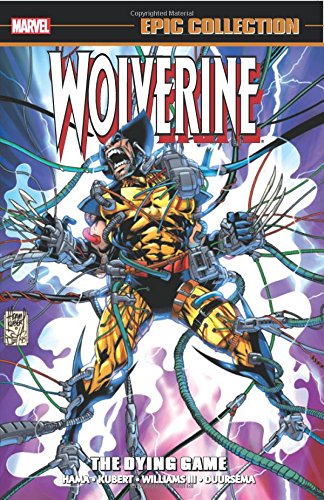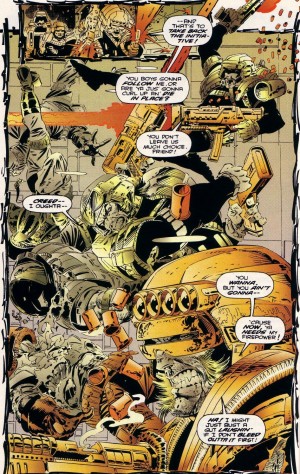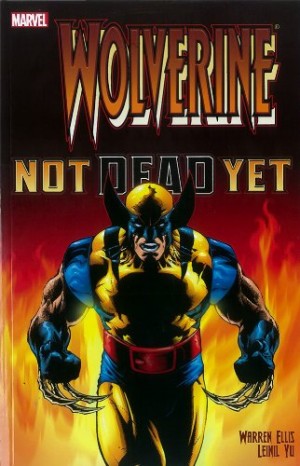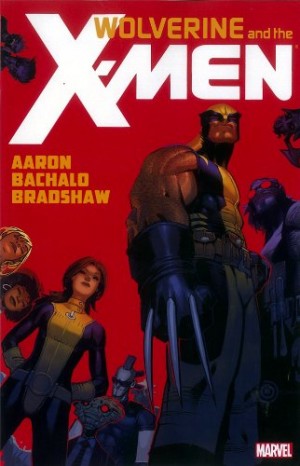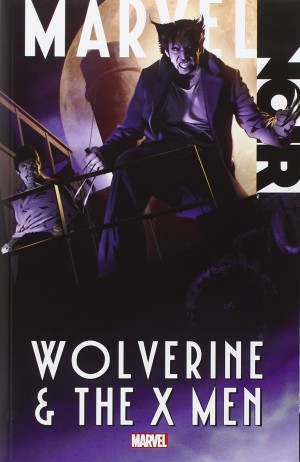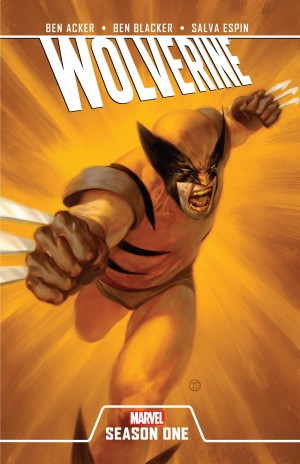Review by Ian Keogh
The Wolverine we meet at the start of The Dying Game, is not in the best of health due to the adamantium having been forcibly stripped away from his skeleton. His claws are now the original bone versions, and an additional consequence is revealed as the central plot. The book opens with Wolverine returning to the far east and Madripoor, in the company of fellow X-Men Gambit, and that sets the tone for much of the remainder, as there’s rarely a chapter in which another headliner fails to make an appearance. Many of these are X-Men either individually, or en masse, concerned about what Wolverine’s going through.
Most of the collection is drawn by Adam Kubert, whose art is very much of the mid-1990s, prioritising big images over storytelling, extremely stylised and contorted characters, and plastering his panels with hundreds of lines not at all necessary. It creates very cluttered pages, yet despite this the basic draughtsmanship beneath is apparent, and occasionally Kubert supplies more traditional layouts for scenes from Wolverine’s past. Ramon Bernado and Fabio Laguna follow Kubert’s lead on fill-ins, but aren’t as talented. Their pages look even messier, and it’s further step down the quality scale to Chris Alexander and Val Semieks. Duncan Rouleau provides some respite from the distortions with more conventional layouts for his chapter.
The Dying Game hosts some clever ideas, but they’re buried deep within Larry Hama’s scripts prioritising fight scene after fight scene and posturing villain after posturing villain with little respite. One of those good ideas emerges in the title tale, a particularly brutal showdown between Wolverine and Sabretooth, in which Sabretooth begins by throwing himself against the electrified barrier of his containment field. Wolverine, by chance, learns that a killer behaved similarly, becoming accustomed to the pain and enabling an eventual escape.
Hama’s main theme is Wolverine regressing to a feral state, and he drags this through what was over a year’s worth of serialised comics, by which time, coupled with the horrible looking art, it’s astonishing any interest remained. Hama only really deserves credit for not opting for the predictable in what was Wolverine’s 100th issue.
Two extras are included. Wolverine’s 1995 annual is interesting for a chance to see the art of a young J.H. Williams III. There are hints of the artist he’d become on developing his own style, but Hama’s story of Wolverine and the X-Men facing other-dimensional demons is as ordinary as his remaining material. A second tale by Christopher Priest and Ben Herrera features Wolverine teaming with old comrade Maverick to rescue Deadpool, and also contains nothing of note.
‘Rahne of Terror’ was published four years earlier than the remaining material, in 1991, a time when Kubert was still drawing people recognisable as such, and it’s very decorative, reminiscent of Joe Kubert’s layouts and style. Wolverine is an almost incidental threat in a plot that concentrates on Rahne Sinclair of the New Mutants, her mind transported to a mystical medieval world where analogues of her colleague exist, including those who’ve died. Puns are central beyond the title, but its muddled and too long, nowhere near Peter David at his peak, yet still readable and still better than anything else in the book.
